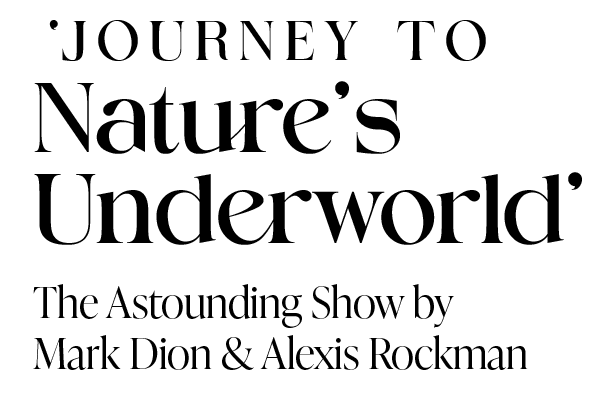
Written & Photographed By Theresa St. John
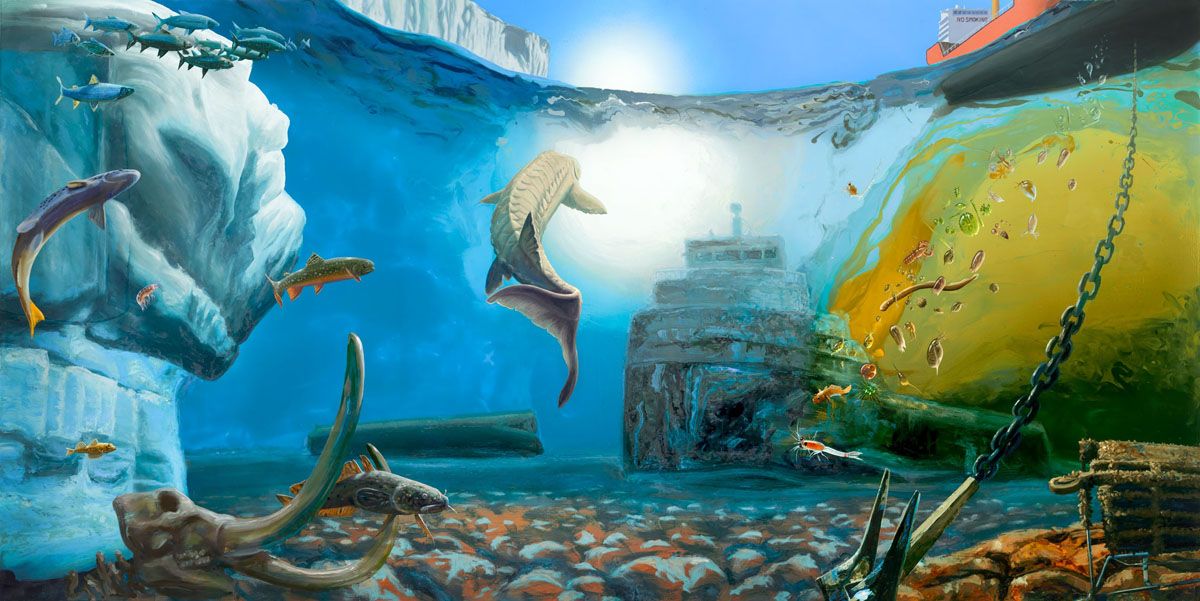
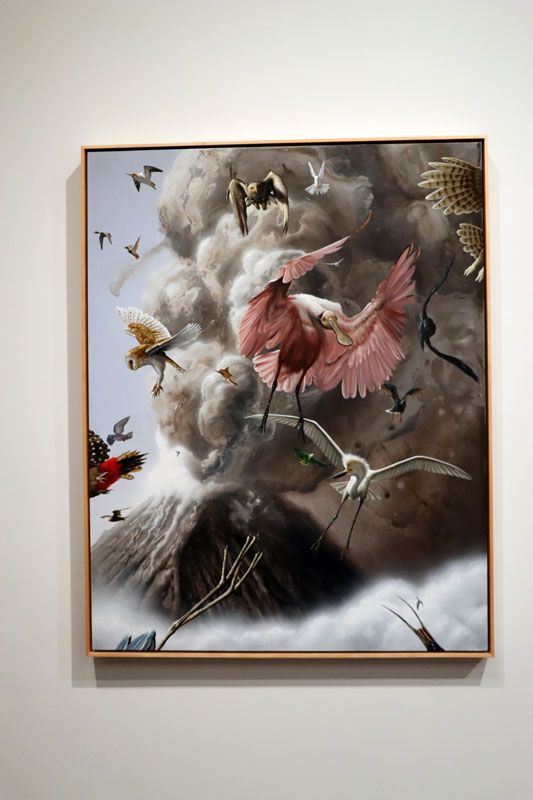
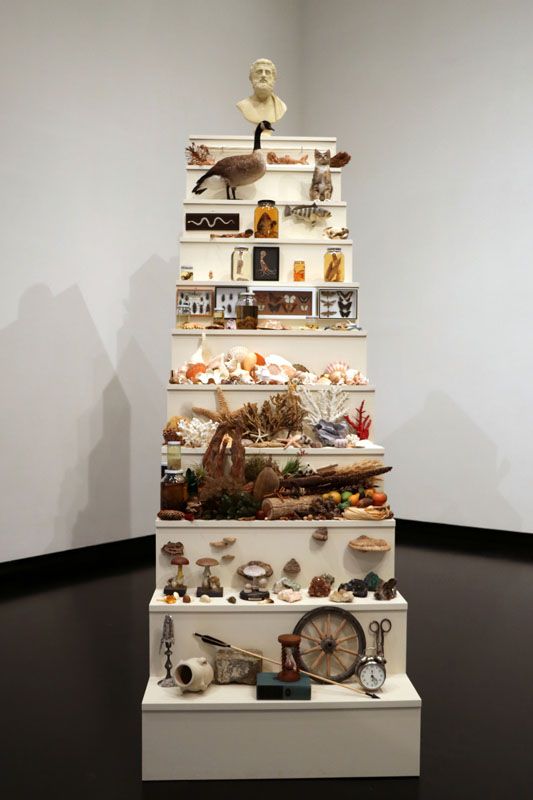
Ok. I must tell you that I visit The Frances Young Tang Teaching Museum and Art Gallery several times a year. It’s always filled with thought-provoking exhibitions on both floors and along the hallways inside the building.
When I hear of this most recent show, I’m intrigued. I’m not familiar with the artists Mark Dion or Alexis Rockman. Interestingly, they’ve known each other for over 30 years. And although they’ve worked to express themselves through different mediums, they share a deep concern over man’s interaction with our planet and environment.
The American Federation of Arts is the leader in traveling exhibitions internationally. I’ve read a lot about the organization and am impressed that it’s so dedicated to enriching the public’s experience and understanding of visual arts worldwide.
When I walk into the exhibition, I’m struck by many things. First, Sebastian Stafford, one of the docents that day, explains how the two-person show will run here through January 5th, 2025, and that it takes up nearly the entire space—minus one hallway. I mean, that’s a massive show!
Sebastian’s excitement is catchy. As we walk around the main floor and share thoughts about its scale, I see he’s very invested in the exhibition. When we stand together in front of a tall staircase set in the middle of the gallery, Sebastian points out items on the 1st step—a clock, a pair of scissors, and a candlestick, among other things. The 2nd step holds mushrooms and articles of geological importance. On all 11 steps, there are objects we all recognize, once living or inanimate, all the way to the top step, where the head of Aristotle sits proudly, looking out over everything beneath him.
Hmmmm,” I murmur. “Right?” Sebastian says enthusiastically. The picture in my head is about how we tend to rate things from the most minor – perhaps the alarm clock, to the most significant in importance – definitely ourselves.
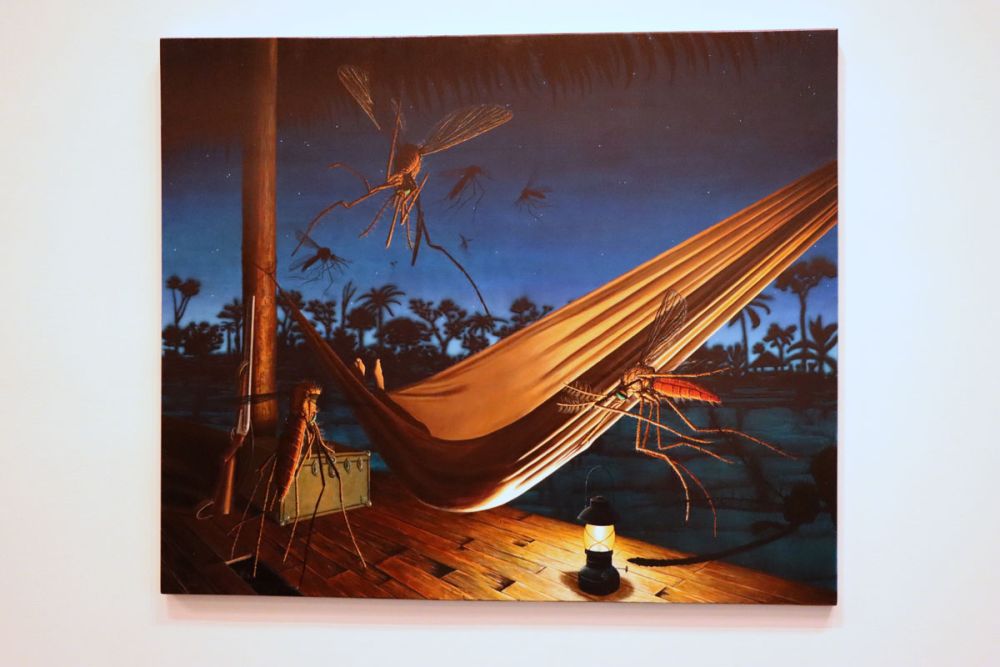
“Open the door and go inside,” Sebastian tells me, pointing to the side of the staircase. I do and find that holes have been poked through the walls at the front of the stairs. The inside is painted black, so light drifting in makes it seem like I’m resting under the stars. I sit quietly for a few minutes, thinking about how calm I am, looking up into the night sky, away from the hustle and bustle of my everyday life.
One of the most impressive paintings I see while there, "The Hammock", by Alexis Rockman, shows a night scene. A lantern on the wood deck gives me a glimpse of human legs and gigantic mosquitos. (Yikes!) Standing in front of this for ten or more minutes makes me feel a certain tension between nature and humankind in an almost futuristic sort of way. (Or is it a prehistoric sort of way?) His paintings seem to depict what our future landscapes might look like with climate change and evolution from a man's hand in the mix.
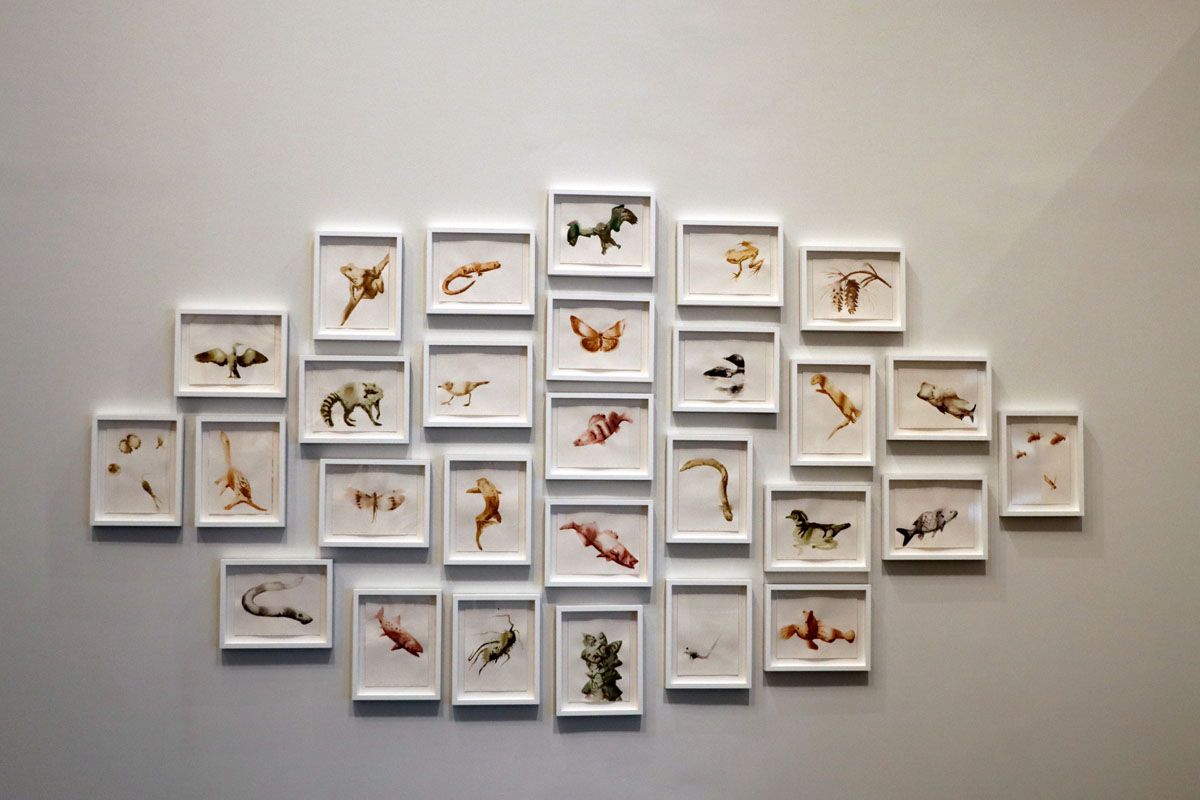
Another favorite painting that draws my attention is "Flight". This one seems to revolve around a volcano erupting and birds of all kinds displaced in the aftermath. The detail of these winged creatures flying in and out of the canvas is compelling—my eyes don’t know which way to turn; it’s such a frantic portrayal of what natural forces can create.
The diorama "American Landscape" is a large-scale collaboration between the two artists. I sit on a bench and look at it for a very long time. On one side of the gallery, a large box stands alone. Inside, the scene is upsetting. It’s of a golf course—think artificial terrain. Half of the wooden box shows daylight, and the other half is under the cover of night. It’s also split into layers—one above the ground and one below. Above, I can see critters that tough it out, scrappy animals that adapt to their surroundings. Below, the earth is filled with trash, all things I recognize, and mostly animal-related waste. The message is certainly open to interpretation. What I see is humans destroying the natural landscape to fill our desires and believing that trash, I don’t know, disappears once thrown away.
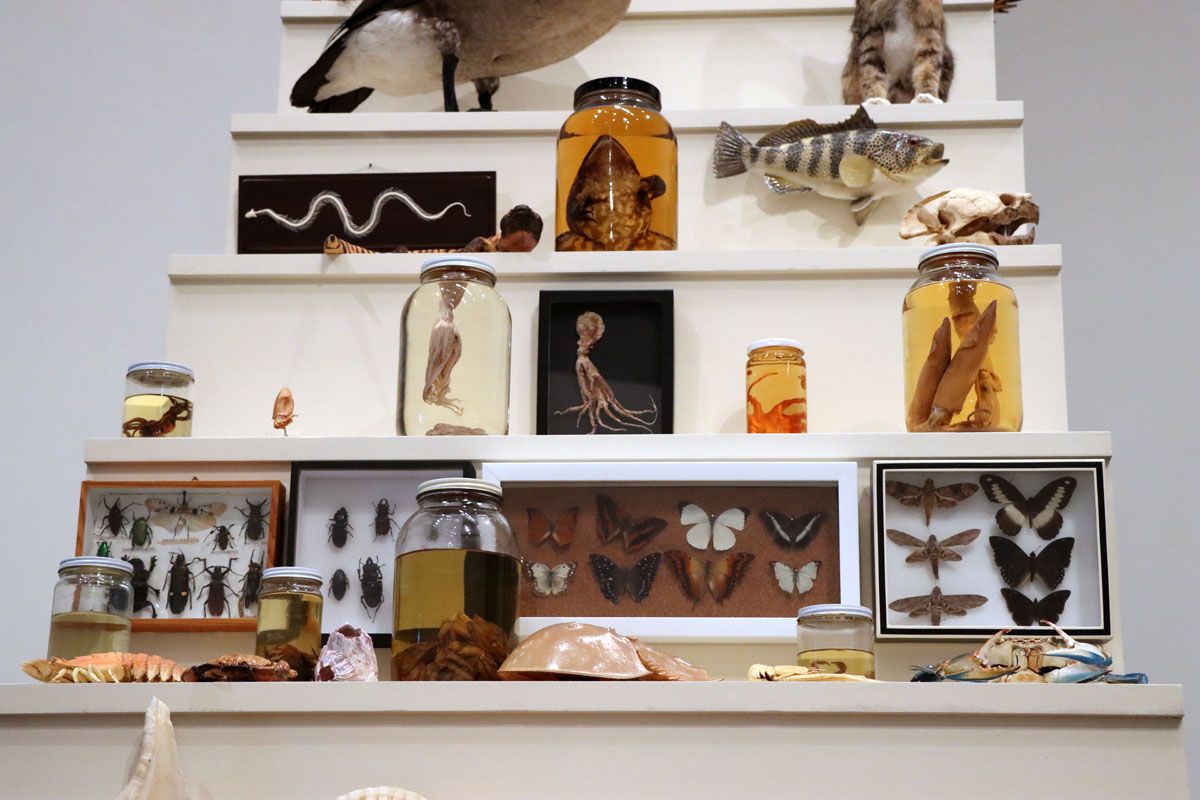
On the 2nd floor, I’m kicked in the teeth by a display carrying an assortment of bright and colorful plastic items. They’re arranged on shelves and seem to call me over to admire them. The exhibit is actually quite beautiful—until I realize the plastic has been pulled from the ocean—waste that we humans throw away and think nothing about how it might affect the rest of the planet—or for how long.
Mark Dion created the "Cabinet of Marine Debris", a startling artistic statement on the plastic pollution clogging our oceans. “He traveled with an expedition to the islands off the coast of Alaska,” Rachel Seligman, a Tang curator, tells me when I meet with her a few days later to discuss the show. She nods sagely when I ask about the Great Pacific Garbage Patch. “It’s the largest ecosystem on Earth and the site of an enormous collection of human-created debris.” She explains that five major oceanic gyres cover most of the northern Pacific Ocean. “Mark collected all this plastic along the shores of beaches he visited, brought it home, cleaned it up, and arranged it in this cupboard.”
When I explain my reaction to seeing it laid out, ‘just so,’ she smiles. “You’re right. It’s the push-pull of emotions – your head says one thing (It’s beautifully done,) and your heart says another – (“Oh my gosh, look at how we harm the planet!).”
I could go on and on about this fantastic show, but I won’t. I’ll end here, hoping you will want to visit the Tang yourself and draw your own conclusions about the message of importance these two artists attempt to share with the world.
I wish Greta Thunberg could see it, and if you don’t know Greta, please Google her! I hope the youth in the area will come in droves and be moved to act. It’s hard to think that this is what we’ve done to our planet – that this is the environment we are leaving to future generations.
“Mark Dion and Alexis Rockman: Journey to Nature’s Underworld" is organized by the American Federation of Arts and curated by Suzanne Ramljak, Chief Curator at the Frederik Meijer Gardens & Sculpture Park and former curator at the American Federation of Arts. Elizabeth Belfer and Victoria E. Triplett have provided support for the exhibition. The exhibition is organized for the Tang Teaching Museum by Rachel Seligman, Assistant Director for Curatorial Affairs and Malloy Curator. It is supported by the Tang Teaching Museum, the Friends of the Tang, and the Andrew W. Mellon Foundation.”
www.amfedarts.org/exhibitions/current
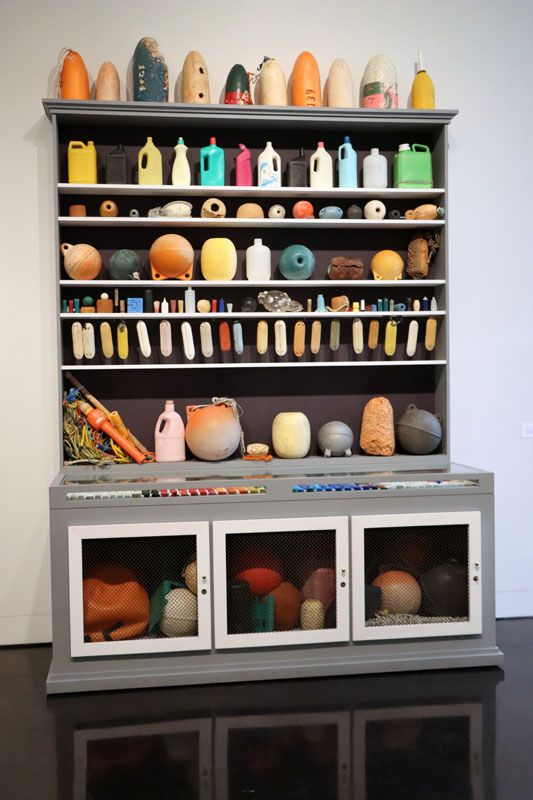
The artists Mark Dion and Alexis Rockman will be at the Tang Teaching Museum to take part in public programs in conjunction with the exhibition "Mark Dion and Alexis Rockman: Journey to Nature’s Underworld".
Monday, September 30, 6 pm: "Life of PI" Screening. The artist Alexis Rockman created inspirational and concept art for the 2012 Oscar-winning feature film, directed by Ang Lee. In "Life of PI", a shipwreck strands young Pi Patel on a lifeboat with the only other survivor—a Bengal tiger. Rockman will speak as part of the event. The screening is part of the Nature’s Underworld Film Series. The complete series is on the Tang website.
Tuesday, October 1, 6 pm: Dunkerley Dialogue with Mark Dion, Alexis Rockman, Heather Hurst and A.J. Schneller. The exhibiting artists will be in conversation with two Skidmore College faculty members: A.J. Schneller, Associate Director and Associate Professor of Environmental Studies and Sciences, and Heather Hurst, Associate Chair and Professor of Anthropology. Dunkerley Dialogues pair Skidmore professors with artists in a conversation format, which is often a catalyst for new connections and understandings across disciplines, and can spark new ideas for all participants. Dunkerley Dialogues are held each semester and are made possible by a generous gift from Michele Dunkerley ’80.
Both events are free and open to the public.
For more information, call the Tang Visitors Services Desk at
518-580-8080 or visit https://tang.skidmore.edu.